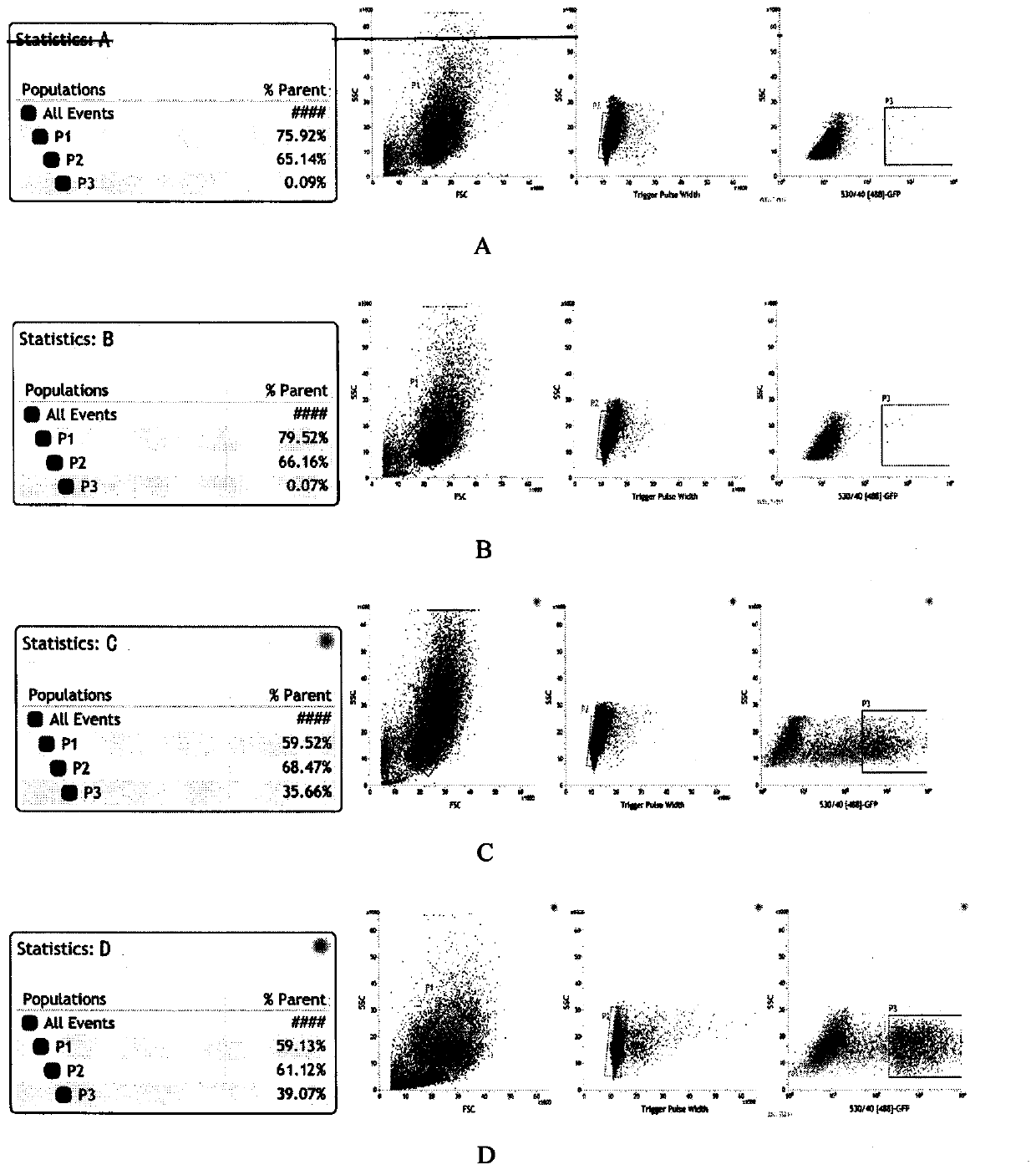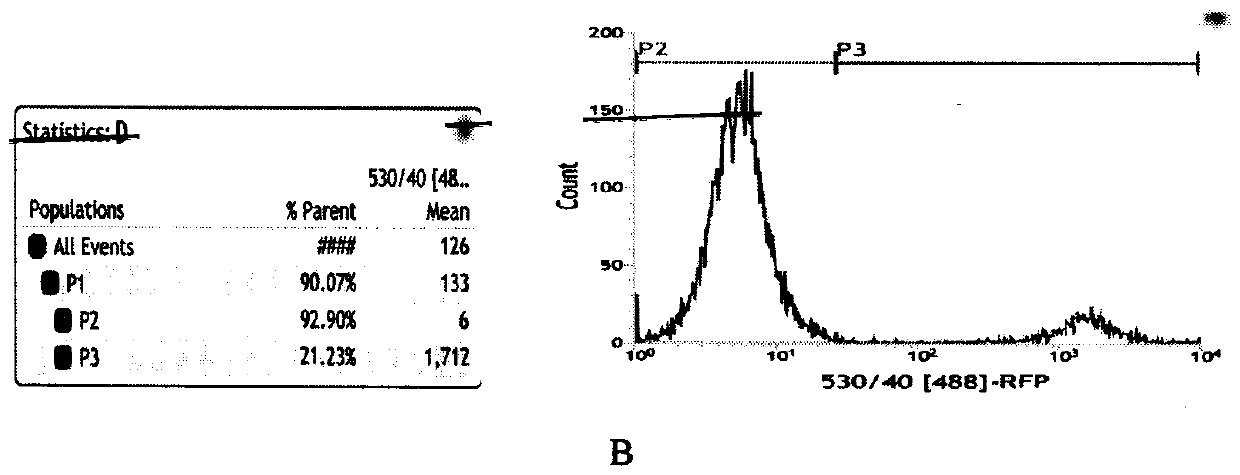An auxiliary plasmid for efficiently establishing a transgenic mouse model and its construction method
A technology of transgenic mice and helper plasmids, applied in the field of genetic engineering, can solve problems such as low efficiency, and achieve the effect of simple operation method, simple construction process and efficient construction
- Summary
- Abstract
- Description
- Claims
- Application Information
AI Technical Summary
Problems solved by technology
Method used
Image
Examples
Embodiment 1
[0022] Example 1 The helper plasmid mediates the insertion of pDsRed2-N1 plasmid into the mouse genome
[0023] (1) Construction of helper plasmid
[0024] The pX330-U6-Chimeric_BB-CBh-hSpCas9 plasmid (Addgene plasmid ID: 42230, hereinafter referred to as pSpCas9(BB)) was digested with BbSI, and after 1 hour in a water bath at 37°C, electrophoresed on 1% agarose to recover the digested product ( TAKARA gel recovery kit).
[0025] The enzyme digestion system is as follows:
[0026]
[0027] Use the online tool ZiFiT Targeter version 4.0 to design oligonucleotides targeting mouse genome-specific target site sequences, specifically:
[0028] Specific target site sequence: 5'-GGGGGGGAGCCAGCGCGCTG-3' (SEQ ID NO.1);
[0029]The corresponding oligonucleotide pair is: Oligo (+): 5'-caccGGGGGGGAGCCAGCGCGCTG-3' (SEQ ID NO.2);
[0030] Oligo (-): 5'-aaacCAGCGCGCTGGCTCCCCCCC-3' (SEQ ID NO. 3).
[0031] Anneal the two oligonucleotides to form a short double-stranded DNA with sticky...
Embodiment 2
[0048] Example 2 The helper plasmid mediates the insertion of pEGFP-N1 plasmid into the mouse genome
[0049] The helper plasmid pSpCas9(32T) was obtained according to the method in step (1) of Example 1. The linearized pEGFP-N1 plasmid (Clontech, specifically refer to the Clontech instructions) and the pSpCas9 (32T) helper plasmid were co-transfected into a mouse liver cancer cell line (Shanghai Cell Bank, Chinese Academy of Sciences) by electroporation (see step 1 in Example 1 for specific operations ( 3)), under the same conditions, only the linearized pEGFP-N1 plasmid, the pSpCas9(32T) helper plasmid, and no plasmid were transfected as controls.
[0050] 24 hours after transfection, adherent cells were digested with trypsin, collected by centrifugation, washed twice with PBS, and then transiently transfected GFP-positive cells were sorted by flow cytometry. The results showed that only transfected pEGFP-N1 plasmid ( image 3 C) and pEGFP-N1+pSpCas9 (32T) recombinant plas...
Embodiment 3
[0052] Example 3 Preparation of transgenic mouse tumor model by helper plasmid mediating pbabe-c-mycT58A+HRasG12V plasmid
[0053] The helper plasmid pSpCas9(32T) was obtained according to the method in step (1) of Example 1. The linearized pbabe-c-mycT58A+HRasG12V plasmid (Addgene plasmid ID: 11130, see for details: Kendall SD, LinardicCM, Adam SJ, Counter CM.A network of genetic events sufficient to convert normal human cells to a tumorigenic state[J] .Cancer Res.2005, 65(21): 9824-8) and pSpCas9(32T) helper plasmid co-transfected mouse fertilized egg cells by microinjection (see Chi Jun, Kuang Ying et al., DNA fragment size pair preparation Influence of integration efficiency of transgenic mice [J], Experimental Animals and Comparative Medicine, 2012, 32(2), 116-119), and under the same conditions, only linearized pbabe-c-mycT58A+HRasG12V plasmid and pSpCas9 were transfected (32T) helper plasmid, no transfection of any plasmid was used as a control, and 100 fertilized eggs...
PUM
 Login to View More
Login to View More Abstract
Description
Claims
Application Information
 Login to View More
Login to View More - R&D
- Intellectual Property
- Life Sciences
- Materials
- Tech Scout
- Unparalleled Data Quality
- Higher Quality Content
- 60% Fewer Hallucinations
Browse by: Latest US Patents, China's latest patents, Technical Efficacy Thesaurus, Application Domain, Technology Topic, Popular Technical Reports.
© 2025 PatSnap. All rights reserved.Legal|Privacy policy|Modern Slavery Act Transparency Statement|Sitemap|About US| Contact US: help@patsnap.com



